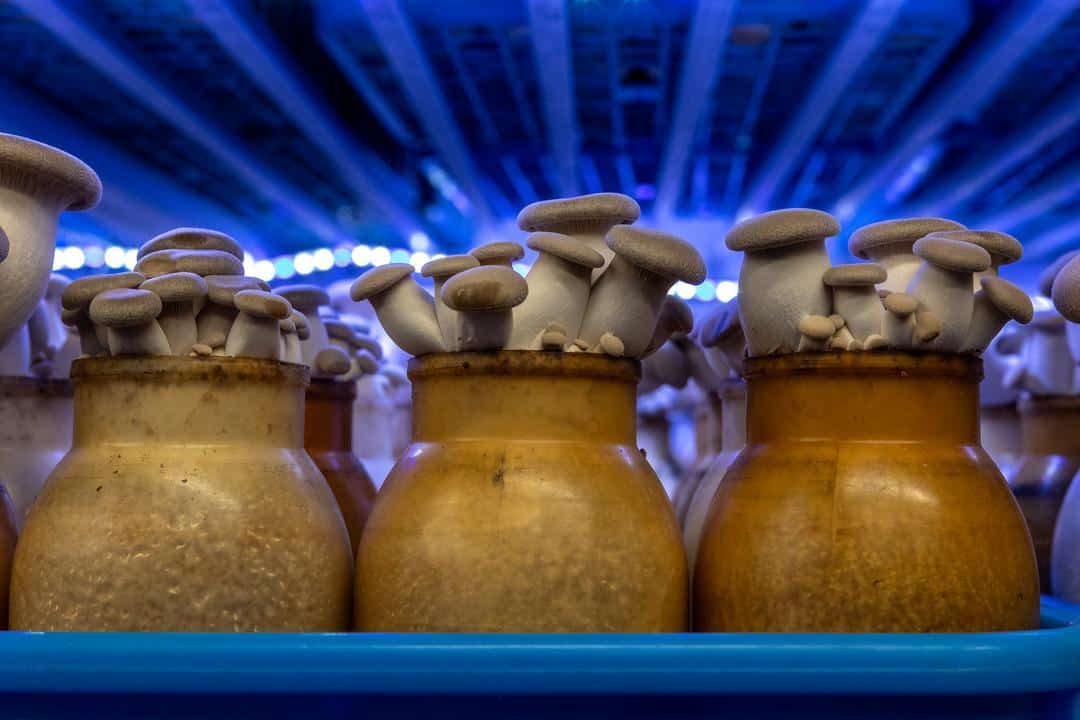From Soil to Superfood: A Visit to a Mushroom Farm
Let’s visit Gourmet Mushrooms, a Sonoma County mushroom farm, to learn more about specialty mushrooms and how they’re grown!
If you keep up with health and wellness trends, you’ve undoubtedly realized that mushrooms are having a moment. Think back to cauliflower, circa 2018. People were obsessed with cauliflower’s versatility, using it for literally everything from pizza crust to ice cream.
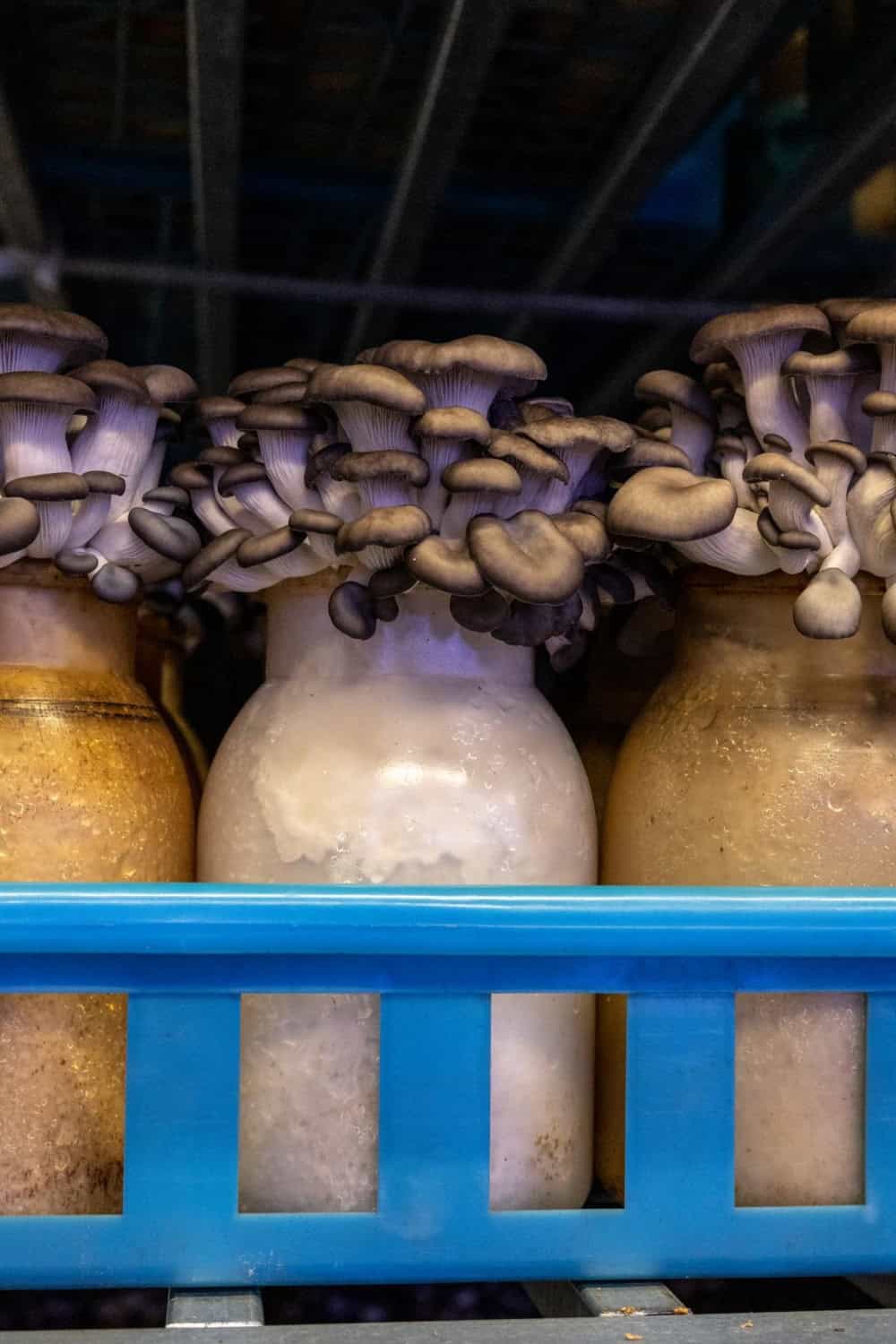
In the case of mushrooms, there are several different reasons why people are suddenly so interested. The culinary crowd was probably the first to jump on the bandwagon, heralding mushrooms’ meaty texture and the unique umami that they add to dishes. Environmentalists are attracted to the fact that mushrooms are incredibly sustainable and have the potential to help address the food needs of a growing population. However, it’s probably the potential health benefits of mushrooms that have garnered so much attention for this powerful superfood. There’s so much we still don’t know, but studies have indicated that mushrooms contain compounds that may lower cholesterol, protect brain health, and even reduce the risk of cancer.
Marketing Mushrooms – Meet Justin Reyes
We met with Justin Reyes, the Sales and Marketing Director at Gourmet Mushrooms in Sonoma County, to learn more about how specialty mushrooms are grown. Justin started off in the wine industry, but a stint as a regional wine buyer at Whole Foods changed the course of his career. Justin explains, “Whole Foods really taught me about what’s in our food. There’s a whole list of banned ingredients, and that was really eye-opening for me. While I was there, I read Omnivore’s Dilemma by Michael Pollan which delves into the food systems we have in the United States. In the last chapter, Michael goes up to Lake Sonoma to forage a meal – hunting Porcini mushrooms. He says, “I was like, ‘Hunting mushrooms, that sounds interesting. I want to learn how to do that.’ So, I reached out to a few friends and asked to go mushroom hunting.”
After months of nagging, Justin finally had his moment. One cold and rainy morning, he and a group of friends finally met at Salt Point State Park to forage for mushrooms. Justin recalls, “It’s one of only two public spaces that actually allows you to hunt mushrooms legally in California. We found a bunch of different things, interesting mushrooms.”
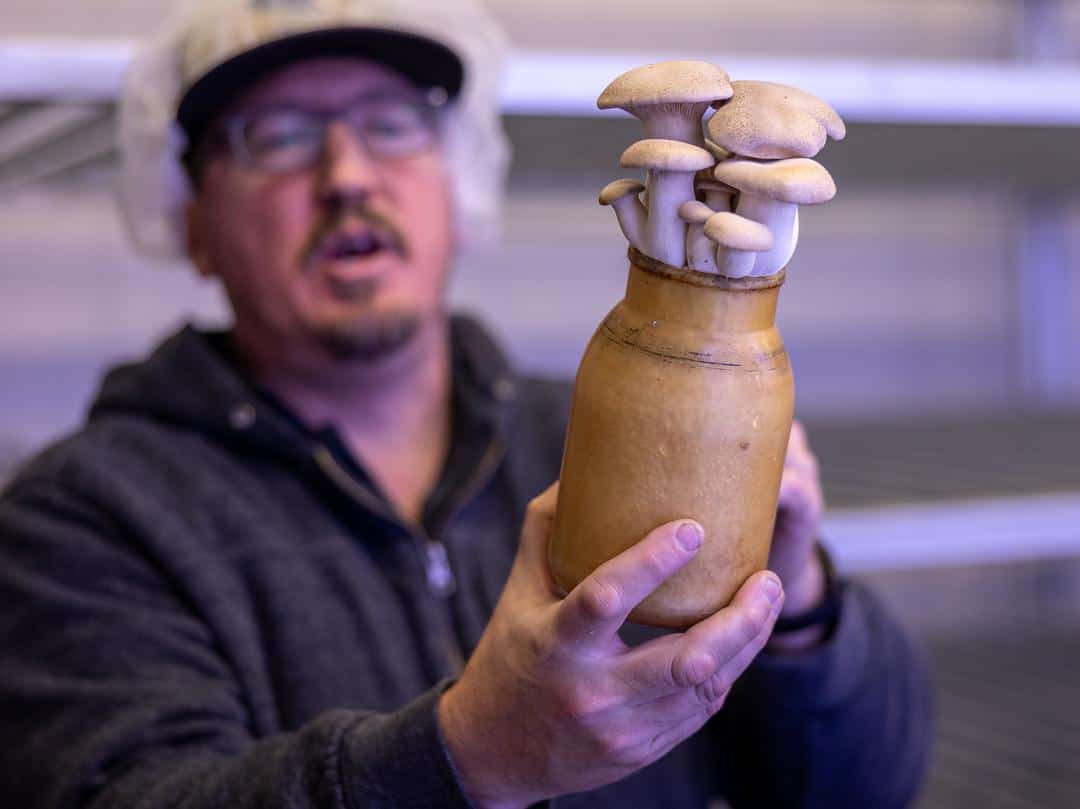
Justin was instantly hooked. He quit his job at Whole Foods and accepted a sales position at Gourmet Mushrooms. Although Justin had grown up in the area, he was surprised to learn that one of the country’s premier specialty mushroom growers was in his own backyard – and had been for decades. He quickly realized that Gourmet Mushrooms was intentionally staying under the radar. Until recently, mushroom-growing techniques were shrouded in secrecy. Which begs the question: If these techniques were so top-secret, how did the folks at Gourmet Mushrooms learn them?
Gourmet Mushrooms: An Origin Story
Let’s rewind back to the 1970’s. Enter Malcolm Clark, a young Scottish man with a wildly colorful resume. Malcolm held a degree in biology and after working as a diver for the University of Lisbon and collecting poisonous snakes in Africa, he eventually landed as a biology professor at the University of Toronto. One night, his Japanese roommate invited him to a talk on mushrooms, and Malcolm happily accepted. Afterward, Malcolm struck up a conversation with the speaker, Dr. Tsuneto Yoshii, a world-renowned mushroom expert. In an incredible twist of fate, the two realized they had a common connection. Malcolm’s grandfather, also a scientist, had spent years in Japan. Dr. Yoshii’s mentor had studied under Malcolm’s grandfather.
By the end of the evening, Dr. Yoshii had extended Malcolm an invitation to study mycology, learning to cultivate medicinal and culinary mushrooms. Malcolm, always up for an adventure, accepted.
Setting up shop – the making of a mushroom farm
In 1977, Malcolm embarked on yet another adventure – starting a mushroom farm. Partnering with David Law, a Japanese biologist living in Northern California, the two quickly identified the perfect location for their fledgling operation – a former chicken farm in Sonoma County. The area’s coastal climate was conducive to growing mushrooms, and at the time, land was not nearly as expensive as it is today. And so, Gourmet Mushrooms was born, holding the unique distinction of being the first American company to cultivate shiitake mushrooms successfully. Today, Gourmet Mushrooms cultivates seven varieties of fresh specialty mushrooms under the Mycopia Mushrooms label.
What are specialty mushrooms?
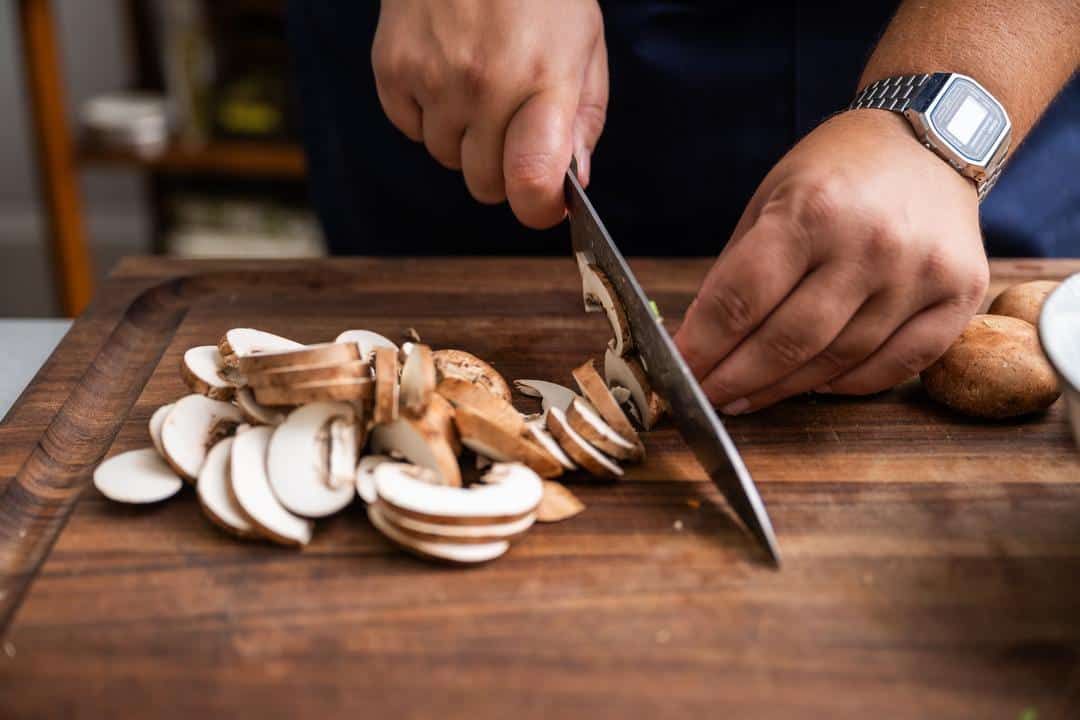
In the produce aisle of your local grocer, you’ll typically find white button mushrooms, cremini mushrooms and large portabella mushrooms. These three “varieties” make up about 90% of the mushrooms sold commercially, but here’s a fun fact: they are all the same variety, harvested at a different stage in the growth cycle.
Specialty mushrooms include every other mushroom variety, except these three – white button, cremini and portabella.
How are mushrooms grown and harvested at Gourmet Mushrooms
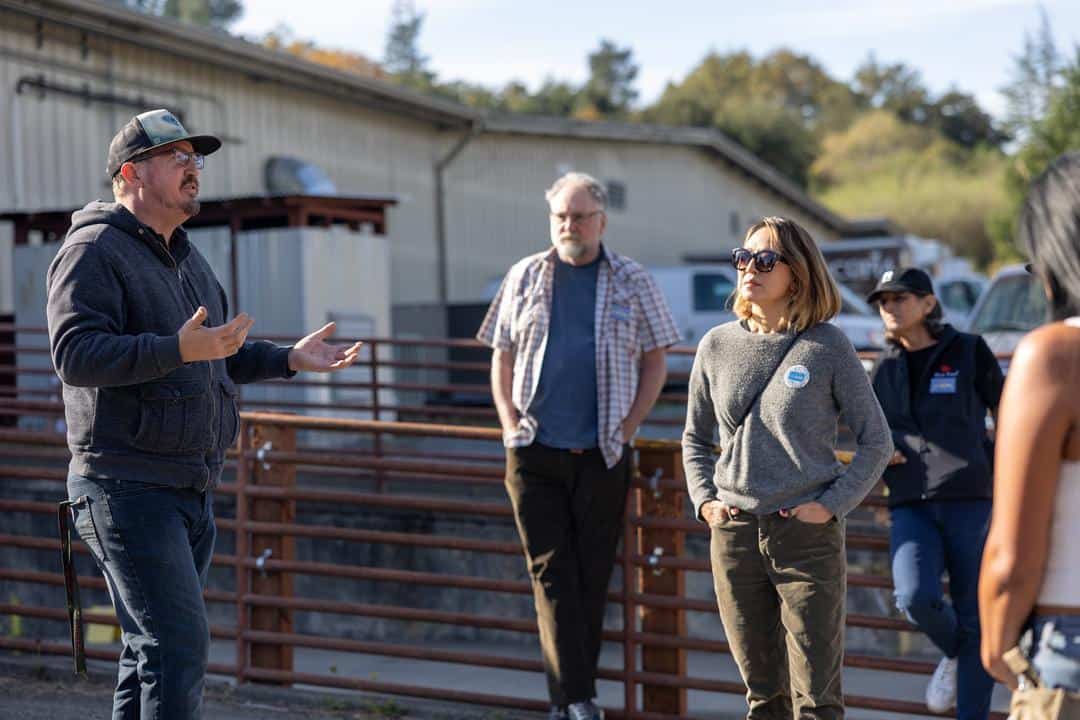
Thanks to modern-day technology like YouTube, mushroom cultivation is no longer shrouded in secrecy. While the general techniques may be common knowledge, Gourmet Mushrooms still keeps some of the details close to the vest. Here’s what we can share from our visit to the Sonoma mushroom farm:
It all starts with substrate
Substrate is the growing medium for mushrooms. At Gourmet Mushrooms, the substrate is made from agricultural waste products, including oak shavings, corn cobs and soybean hulls. The substrate nourishes the mycelium (a mushroom’s root system). The makeup of the substrate varies slightly across different varieties, and the exact formula is proprietary.
Sterilization
At Gourmet Mushrooms, most of the specialty mushrooms are grown in reusable plastic jars (except for Maitake mushrooms, which are grown in bags). Justin states that plastic jars are more cost-effective and lighter than glass – an important detail when you consider that the jars are often transported in stacks of a hundred or more.
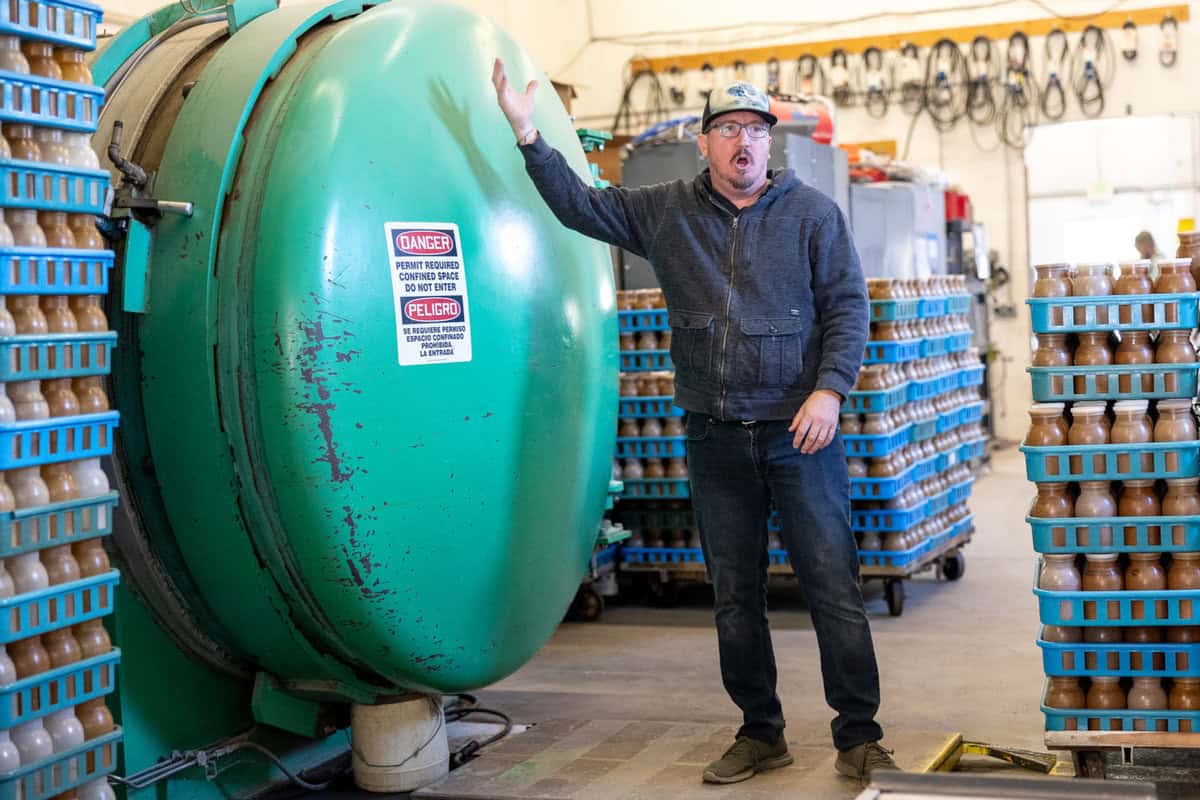
The jars and lids are stacked neatly on carts and steam-sanitized in a special machine called an autoclave. Immediately after, the carts are transferred to a special cooling room with HEPA filters to prevent contamination.
Inoculation
Once the jars have cooled, they’re filled with substrate. Three holes are mechanically punched through the substrate, and the spawn (the genetic material of the mushroom) is added to each jar – a process called inoculation. Then, they close the jars with special tops that allow the mushrooms to breathe. Justin explains, “Mushrooms are more closely related to animals than plants. They breathe oxygen and exhale carbon dioxide. The tops allow air exchange to happen while they’re stacked in the growing room so the mycelium can breathe. It also helps to prevent contaminants getting from bottle to bottle.”
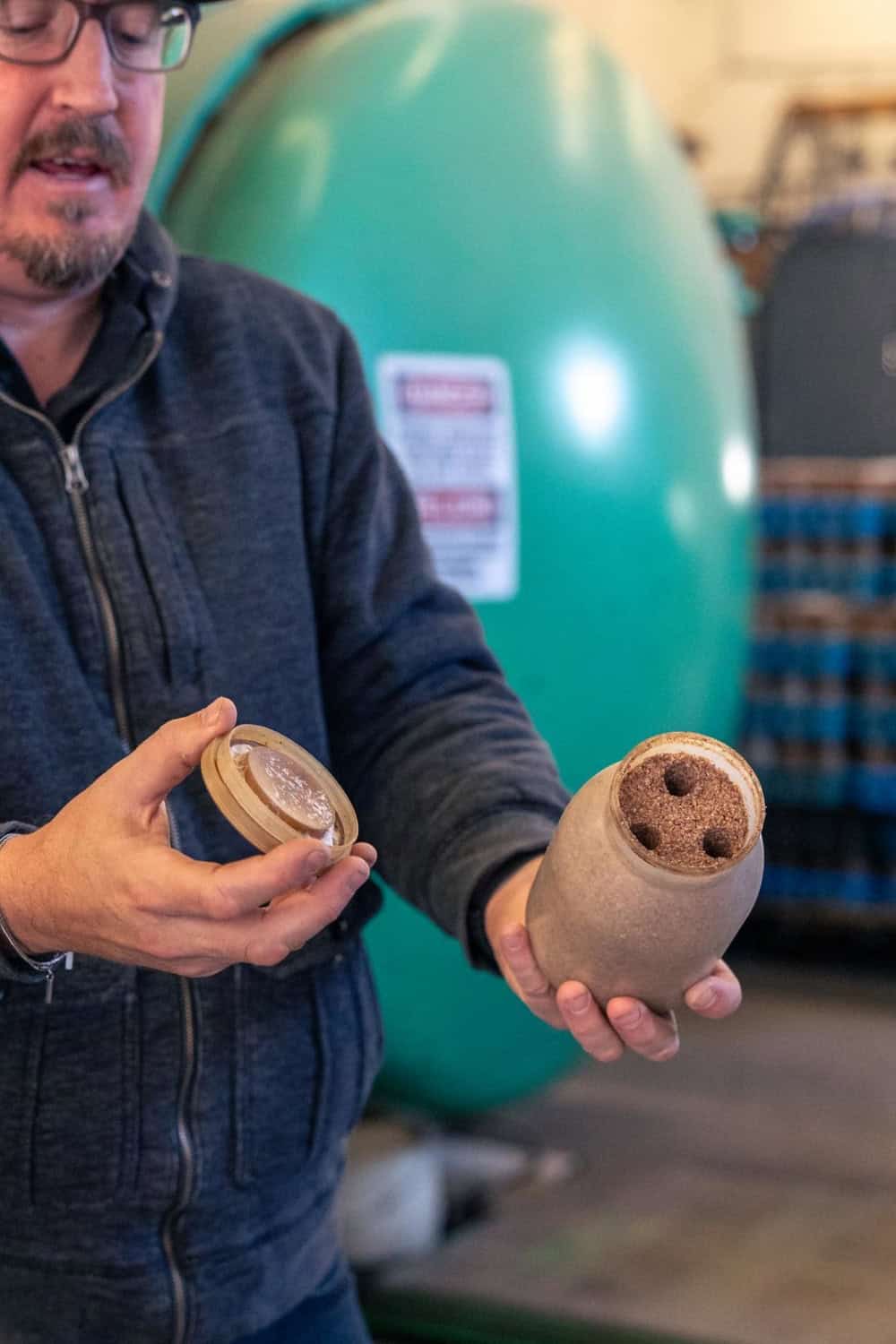
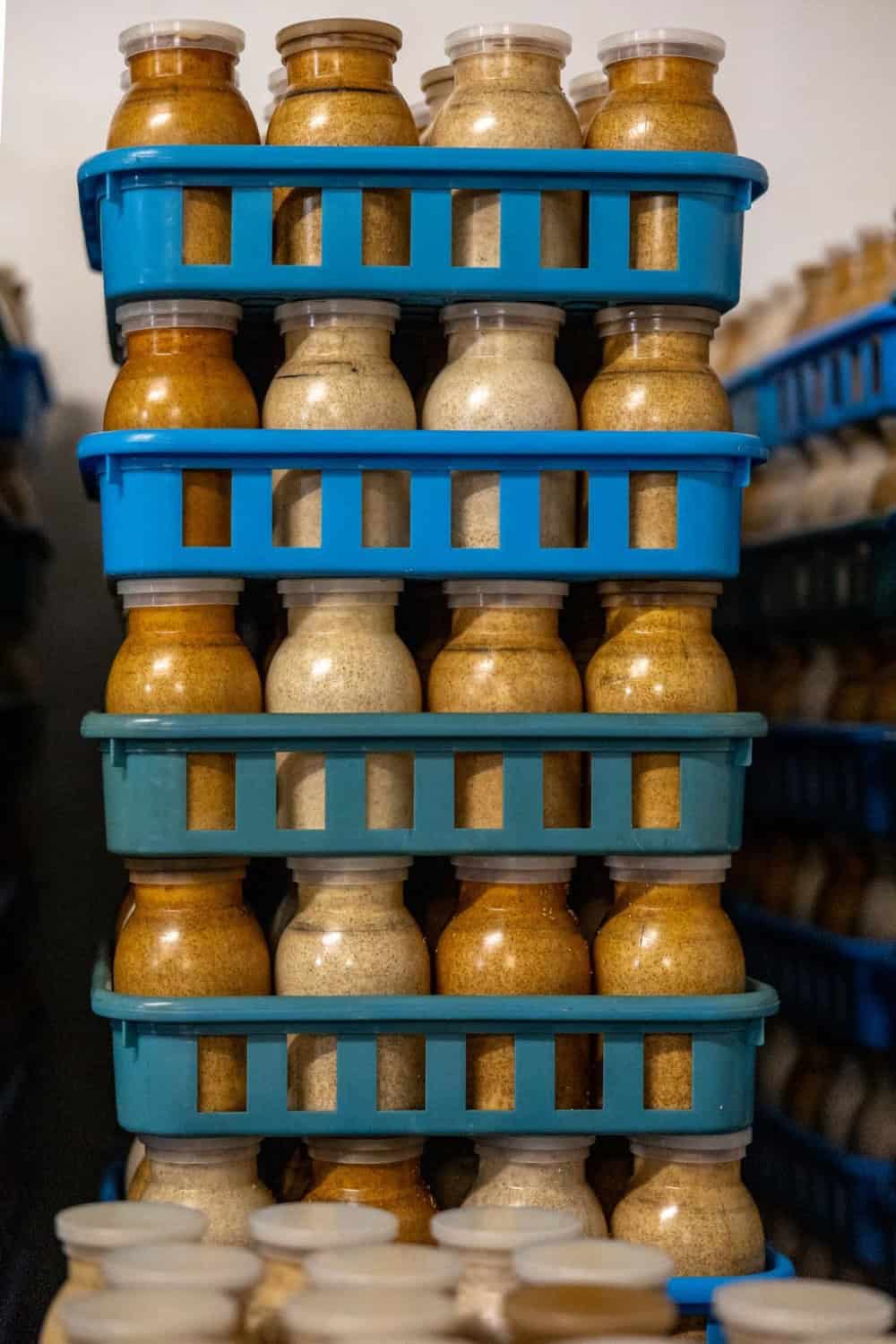
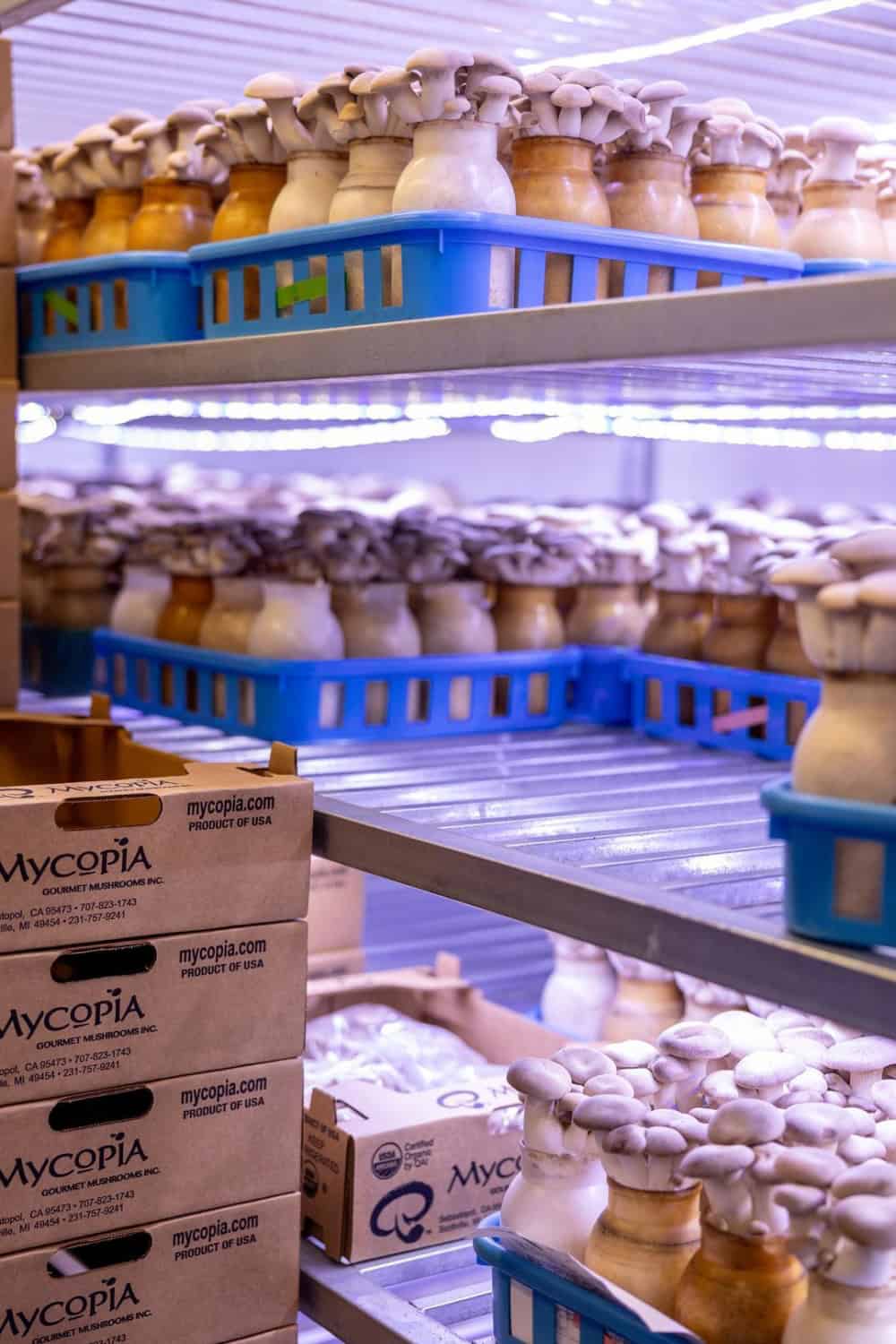
Let it grow
At this point, the bottles are neatly stacked and sent to the growing room, where they’ll spend between two weeks to two months (depending on the variety) as the mycelium develops. When the mycelium has spread all the way through the bottle, the bottles are transferred to the harvest room. They’ll spend 2 weeks under bright grow lights until they’re finally ready to be harvested.
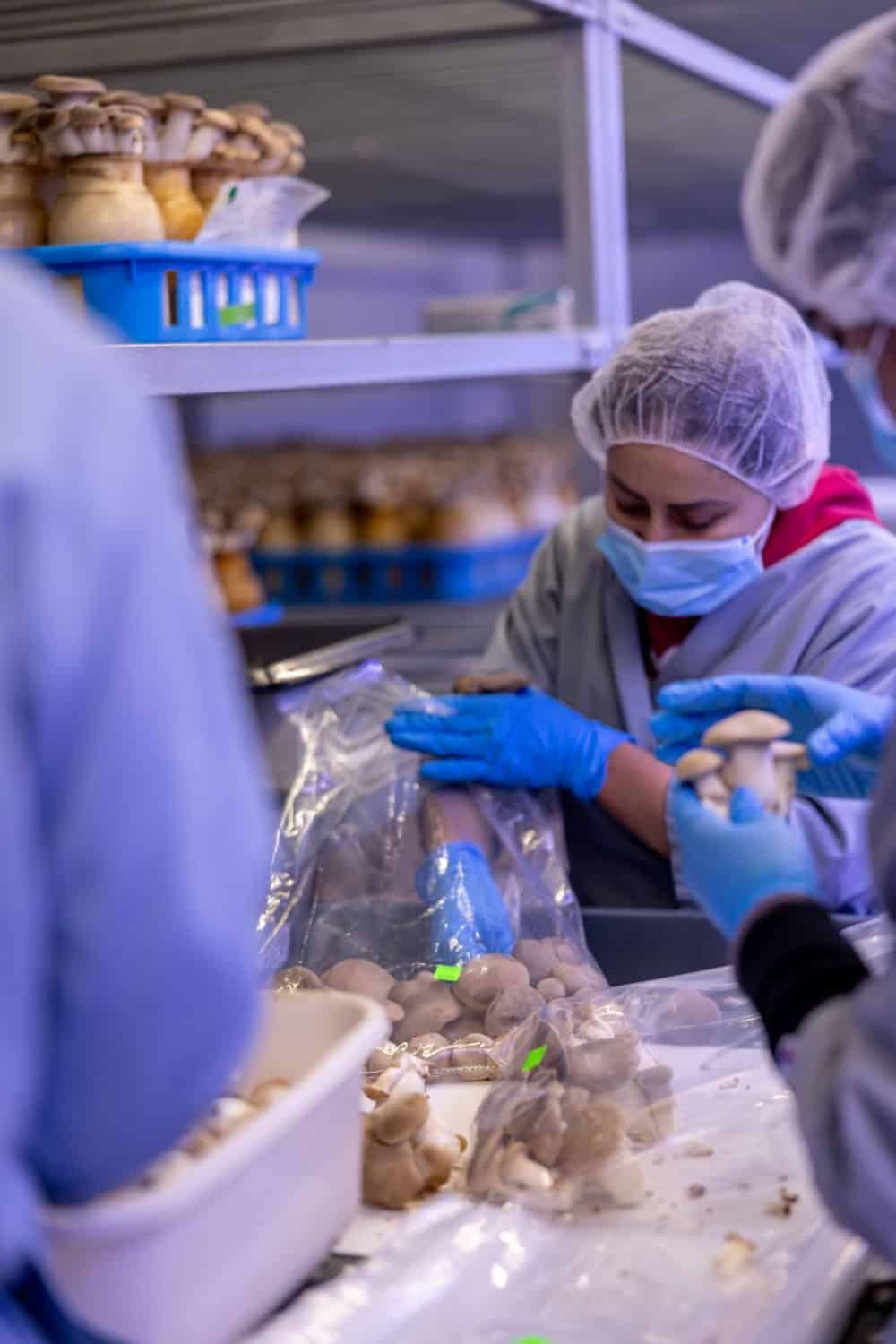
Harvest
Mushrooms are hand-harvested with sharp knives. The harvest team simply slices across the top of the bottle to remove the fruiting body.
After harvest, the bottles are emptied, scraped and sanitized. The spent substrate is turned into compost and sold to local farmers and wineries.
Can mushrooms be harvested more than once?
Mushrooms can be harvested more than once, but because yield is lower on subsequent harvests, Gourmet Mushrooms harvests each jar only one time.
Are mushrooms a sustainable crop?
Mushrooms are an incredibly sustainable product. They require very little water to grow (in fact, the majority of the water usage at Gourmet Mushrooms comes from humidification, steam sterilization and hand washing). Mushrooms have a smaller carbon footprint than most produce, and a smaller footprint in general. Because mushrooms grow in a controlled environment, they can be grown year-round. Gourmet Mushrooms harvests 365 days a year, ensuring a constant supply of fresh mushrooms.
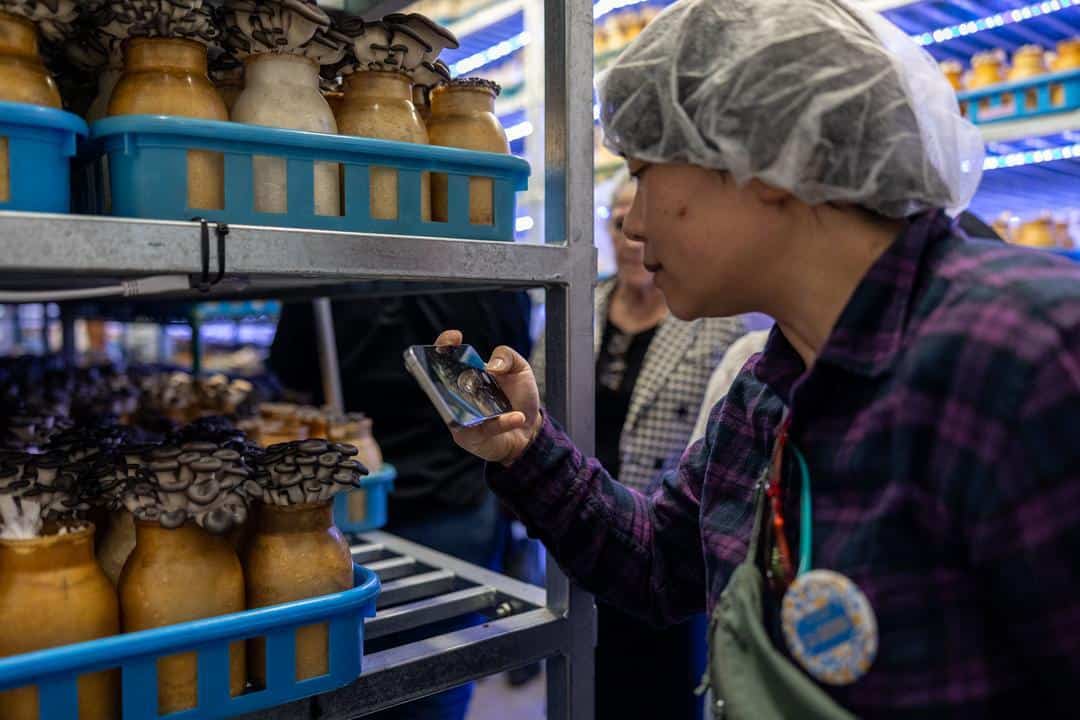
What varieties of mushrooms are grown at Gourmet Mushrooms?
Gourmet Mushrooms has two divisions: fresh mushrooms, which are sold under the Mycopia Mushrooms label, and nutraceuticals, sold under the MycoBiotic label. The different varieties of fresh mushrooms currently grown at their Sonoma mushroom farm include Alba Clamshell, Brown Clamshell, Forest Nameko, Maitake Frondosa, Nebrodini Bianco, Trumpet Royale, and Velvet Pioppini.
Experience Gourmet Mushroom’s specialty mushrooms!
Gourmet Mushrooms’ Sonoma mushroom farm provides specialty mushrooms to some of America’s finest restaurants. In fact, nearby Napa Valley’s French Laundry was one of their first customers! Consumers can find Gourmet Mushroom’s Mycopia label at select grocery stores, and can purchase gift baskets and grow kits online.
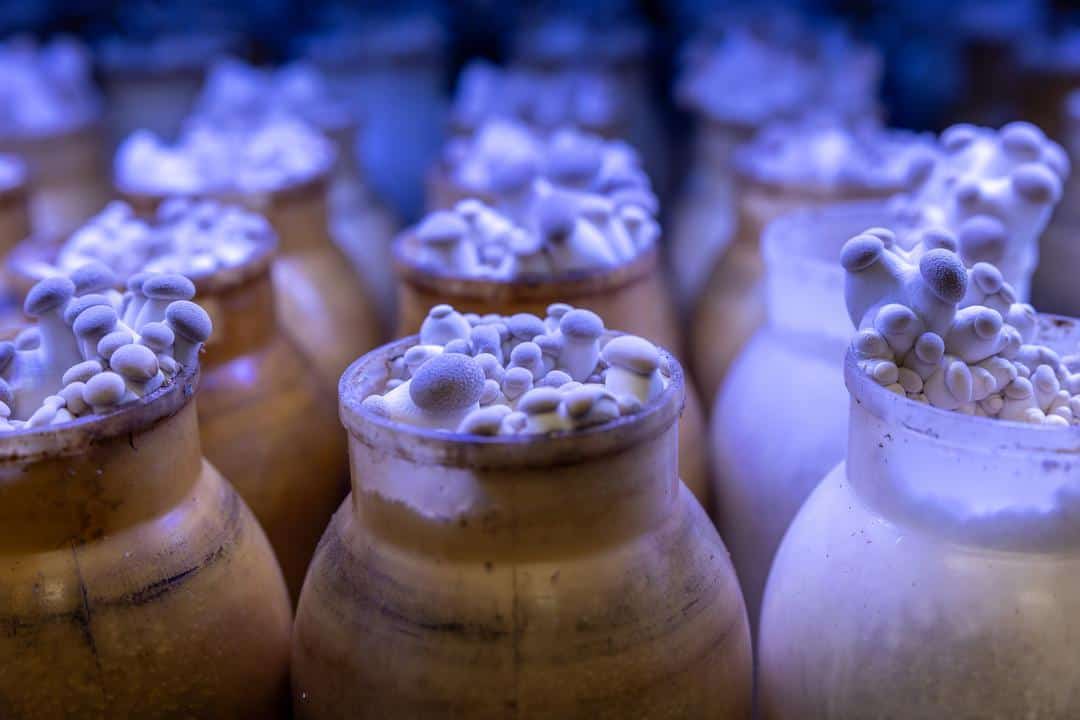
Article and photography by Hilary Rance.

